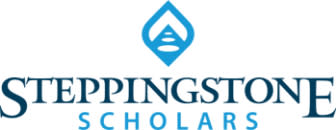After years of brewing his own beer at home, Don Anderson, with the support of a childhood friend and his wife and daughter, took a leap of faith in 2019 and opened Fat Pants Brewing Co. in Eden Prairie the week of Thanksgiving.
Sales from December, the brewery’s first full month in business, surpassed all expectations, leaving Anderson optimistic about the new venture.
His story from there is a familiar one: The coronavirus pandemic spread to the U.S., forcing mandated restrictions and people sheltering at home. The Paycheck Protection Program saved the business.
Fat Pants received two loans for about $200,000, covering 25{797b2db22838fb4c5c6528cb4bf0d5060811ff68c73c9b00453f5f3f4ad9306b} of its payroll. They were both forgiven.
Minnesota has reached a milestone, along with the U.S. as a whole, with more than 90{797b2db22838fb4c5c6528cb4bf0d5060811ff68c73c9b00453f5f3f4ad9306b} of PPP loans forgiven. Overall, businesses based in the state received 228,000 loans worth $16.6 billion.
Fat Pants had its first profitable month in February and an even better March. Now it’s facing small-business decisions rather than pandemic issues. The brewery has expanded to add more space for live music, large gatherings and community events like bingo.
Though the Andersons budgeted a six-month cash cushion into their business plan, they could not have stretched those savings over a pandemic that has lasted more than two years.
The PPP loans, arranged through Old National Bank, “gave us the ability to breathe a little easier,” Anderson said. “For the people who depend on this [place] for a job, they didn’t have to panic.”
The government assistance was not enough for plenty of businesses — from retailers to museums — that did not make it through the two years.
At least six children’s museums closed across the U.S., said Louise Dickmeyer, chief executive of the Children’s Museum of Southern Minnesota in Mankato. If not for two PPP loans, under $150,000 combined, the Mankato museum could have landed on the list.
When stay-at-home orders hit in March 2020, the museum immediately furloughed all employees to cut expenses. But with the PPP funds, Dickmeyer was able to hire a small number back to finish building a new exhibit and then later even more as it prepared to reopen in October 2020 at 25{797b2db22838fb4c5c6528cb4bf0d5060811ff68c73c9b00453f5f3f4ad9306b} capacity.
In 2020, the museum had total revenue of $49,000. For 2021, revenue had tripled, but was still well below past numbers. To compare, in 2019, the museum earned $223,000 in revenue, Dickmeyer said.
“PPP loans were vital in our ability to remain solvent and remain in business,” she said. The loans, both arranged through Bremer Bank, were “absolutely critical for us,” she said.
After this year’s first quarter, revenue for the museum is steady enough to fully cover expenses, Dickmeyer said. The museum is operating with nearly half the staff it had before COVID-19 but plans to add jobs over the next three years to support an expansion.
“Things have been looking up,” she said. “We anticipate returning to where we were, if not exceeding that. The future is bright.”
The PPP loan program, enacted through the Coronavirus Aid, Relief and Economic Security Act, or CARES Act, ended on May 31, 2021. Existing borrowers are eligible to have their loans forgiven if they meet certain criteria that ensured funding was being used for payroll and other business expenses.
Nationwide, over 11 million loans were approved totaling $799.8 billion. Forgiveness has been requested for over 90{797b2db22838fb4c5c6528cb4bf0d5060811ff68c73c9b00453f5f3f4ad9306b} of the total loan value of all PPP loans, and 90{797b2db22838fb4c5c6528cb4bf0d5060811ff68c73c9b00453f5f3f4ad9306b} of the total PPP loan value has been forgiven, in full or in part, according to the Small Business Administration.
Repaying two PPP loans while trying to keep her business would have been too difficult to manage for Angel Rogers, the owner of Angel’s Learning Center in Brooklyn Park, a child-care facility for ages 6 weeks to 10 years.
Enrollment plummeted as parents kept their children home for months. Rogers used two PPP loans awarded through the Minneapolis-based Metropolitan Economic Development Association (MEDA) to pay her staff, bills and rent.
After weathering COVID-19, Angel’s Learning Center is back to a full staff with just under 20 employees, and enrollment has returned to normal levels, Rogers said.
“I saw what my payments would have been; it would have been difficult,” she said. “I would have been good until I had to start repaying.”
For some business owners in Minnesota, PPP loans not only helped pay employees, they led businesses to growth.
Mohamed Omer had a growing Mediterranean food truck operation that faltered once downtown employers sent their office employees home to work in spring 2020. He used the loans to hire employees to scale up his take-out hot chicken restaurant.
Omer changed his food truck dishes to chicken at various degrees of spiciness, and parked his food trucks in residential areas and in front of apartment buildings. He opened a restaurant, Nashville Coop, in St. Paul in September 2020.
Omer is also a client of MEDA and received two PPP loans through the nonprofit. The loans covered 15{797b2db22838fb4c5c6528cb4bf0d5060811ff68c73c9b00453f5f3f4ad9306b} of his payroll, he said. Without it, Omer would not have been able to afford an efficient staff that could operate his food truck-turned-restaurant business, he said.
“It was hard to get employees,” Omer said. “To get them back, I had to pay more money. I had to pay incentives.”
Since 2020, Omer has expanded to three food trucks, placed a Nashville Coop inside U.S. Bank Stadium and Target Center, and recently opened a second full restaurant in Rochester, with plans to open a third in Dinkytown near the University of Minnesota campus.
Nashville Coop employs nearly 40 people between its restaurants and food trucks, Omer said.
“Without MEDA supporting me, it’s hard to come to this point,” Omer said.
In total, MEDA processed 446 PPP loans, and less than 4{797b2db22838fb4c5c6528cb4bf0d5060811ff68c73c9b00453f5f3f4ad9306b} have not been forgiven.
While helping as many clients as possible navigate the PPP process, MEDA itself had to obtain a PPP loan to keep the nonprofit running, said Chief Executive Alfredo Martel.
“A small business owner was not prepared to have to respond to a global pandemic to save their business,” Martel said. “Our clients were not prepared for the world changing.”
Initially, the PPP system was designed to only last eight weeks, said Brian McDonald, director of the Small Business Administration district that includes Minnesota. Demand for assistance was off the charts.
“It showed at the beginning no one knew how long [the COVID-19 effect] was going to last,” he said.
Some of the largest banks operating in the Twin Cities, including U.S. Bank, Bremer and Wells Fargo, processed the loans.
Bremer Bank processed more than 12,000 loans nationwide valued at over $2 billion through both PPP rounds. Wages for about 218,000 jobs were covered with the money, the bank said.
Wells Fargo nationwide wrote loans for 282,000 businesses worth $14 billion and covering payroll for 1.7 million jobs. In Minnesota, the bank worked with 7,000 small businesses with an average loan amount of $42,500 to cover payroll for 38,500 employees, the bank said. Ninety-five percent of those businesses applied for forgiveness, and the SBA has approved more than 98{797b2db22838fb4c5c6528cb4bf0d5060811ff68c73c9b00453f5f3f4ad9306b} of them.
U.S. Bank was responsible for 174,000 loans nationwide at more than $10.7 billion in approved funding, contributing to payroll for more than 1 million jobs, a spokesperson said.
The PPP program greatly expanded the number of banks administering SBA loans — from 1,500 pre-pandemic to more than 5,000, McDonald said.
Nick Jellum, president of Stillwater-based Jellum Law, knows the influx in new SBA lenders firsthand. Jellum Law, a banking and business law firm, has specialized in representing SBA lenders the past two decades, and in 2020, demand for its services went into overdrive to help hundreds of lenders across the nation, including community and national banks based in Minnesota, navigate PPP.
For some lenders and borrowers, many of them in communities with fewer banks, PPP was their first involvement in an SBA program, Jellum said.
“More awareness by lenders of the SBA and its various programs is a benefit not only to the lending community, but certainly the small business community,” he said.
While the mechanics of funding and running a brewery and restaurant were new to Anderson, he does know that PPP saved the fledgling Fat Pants — and his dream.
“I didn’t want it to fail,” he said.



